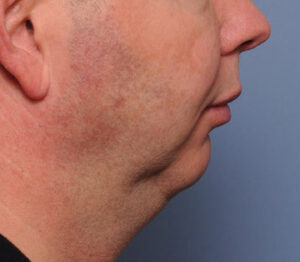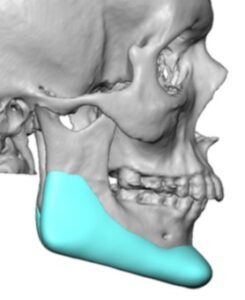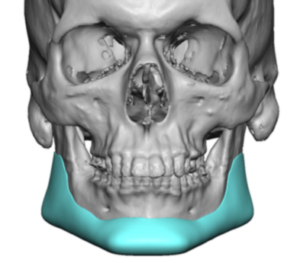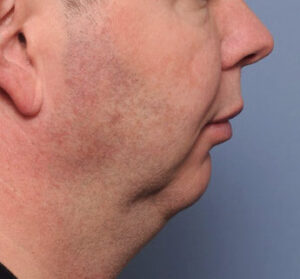Background: In the creation of a more defined jawline numerous surgical options exist. Standard implants of the chin and jaw angles, sliding genioplasty and chin wing osteotomies all have a role to play in reshaping the jawline. But the most definitive and effective procedure remains the jawline or wrap around jaw implant. By covering the entire visible border of the existing jawline, which serves as the transition between the face and the neck, a much more visible lower third of the face can be created.
The caveat in using custom jawline implants for lower facial reshaping is that it is an implant. Debates can be had about the material composition of choice for these implants but, in the end, it is still an implant and not a natural tissue of the body. It is a near exact corollary to that of the breast, where only an implant can create substantial size changes, but comes with the potential sequelae of having an implant in the body. While a jawline implant can not fail like a breast implant, it is under more tissue restrictions than that which occurs on the chest. The size and shape is more complex to place with greater incisional limitations, the masseter muscle is far more sensitive to separation from its bony attachments and the implant is exposed to potential contamination to oral flora.
In the male seeking a very strong jawline result, which requires an aggressive implant design, the pertinent issues are the risk of complications, the length of the recovery to see the result and how close did the final result come to what was predicted.


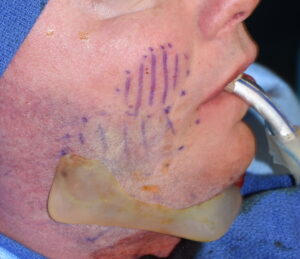
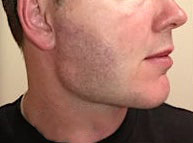

Case Highlights:
1) Major jawline implant augmentation is possible but it comes with risks of infection, masseteric muscle dehiscence and asymmetry….none of which this patient experienced.
2) The recovery from jawline augmentation accompanied by soft tissue reductions is prolonged and is best thought of like what occurs in rhinoplasty…only on a much bigger scale.
3) Stable long-term results are possible in larger jawline implant procedures.
Dr. Barry Eppley
Indianapolis, Indiana




